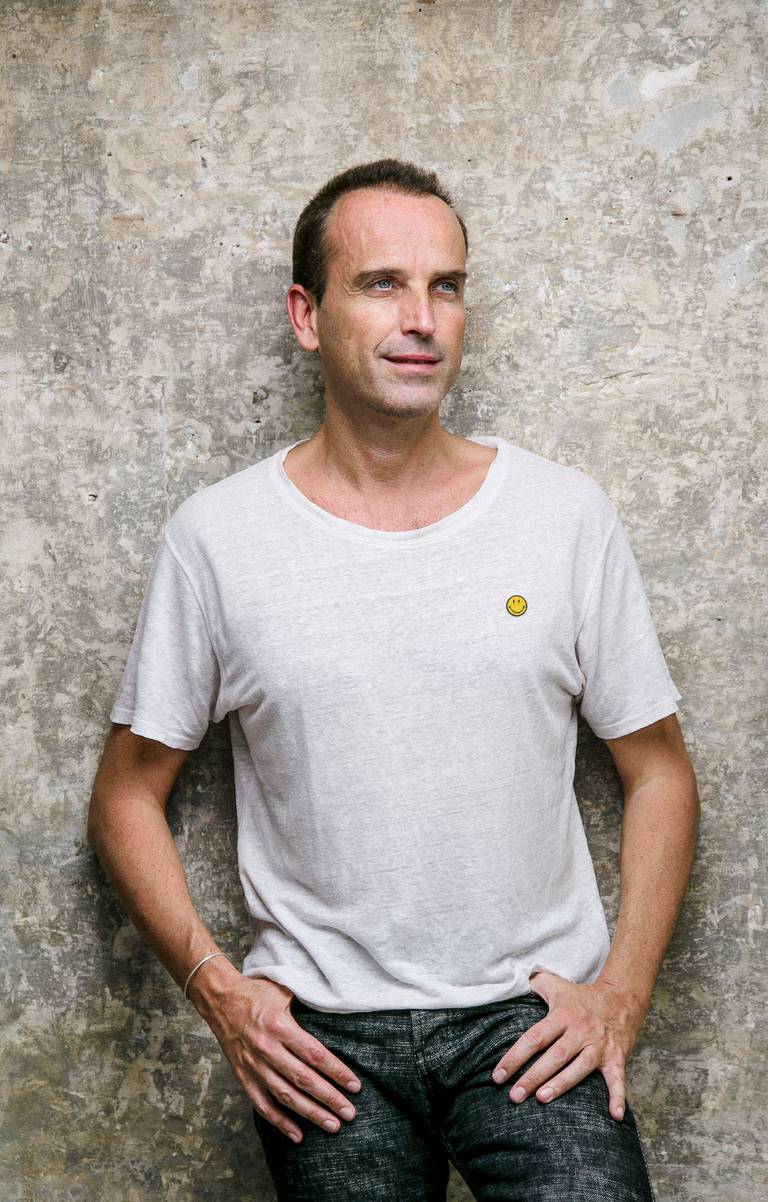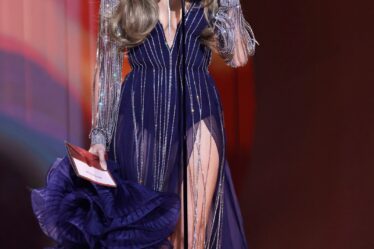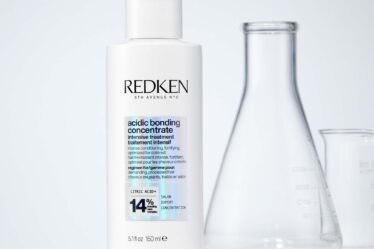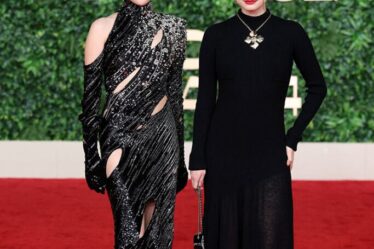
Founded in 1971 by Franklin Loufrani, The Smiley Company built its business on distributing its “Smiley” icon through more than 300 licensees across 12 major categories, selling 68 million products a year across fashion, home, beauty, art, design and food.
Today, the company is reinventing itself. Under the leadership of Loufrani’s son Nicolas, The Smiley Company has moved away from a mass-market licensing business model and into a strategically driven global fashion and lifestyle brand.
To enable this industry shift, Loufrani focus was to push the company towards catwalk collaborations with some of the world’s leading fashion houses and designers. To date, The Smiley Company has collaborated with luxury houses like Dior, Moschino and Loewe, and partnered with retailers and brands like Ma(r)ket, Ellesse, Reebok, Puma and Champion, looking to also engage the streetwear community.
This spring, The Smiley Company will introduce its exclusive Collector’s Edition, featuring over 50 designer collaborations across a range of categories. The collection was developed in partnership with graffiti artist André Saraiva and Sarah Andelman, creative director of former Parisian boutique, Colette.
Now, BoF sits down with The Smiley Company’s CEO Nicolas Loufrani to learn more about the company’s cultural impact and its plans for the future.
What prompted Smiley’s repositioning as a lifestyle brand?
Smiley started as a mass-market merchandising phenomenon in the early 1970s. In the late 1980s, it became associated with the underground movement from London to Detroit, with house and electronic music, which led to overexploitation and little creative control.
After Smileys evolved into the first graphic emoticons in the late 90s, I decided from 2007 to reinvent Smiley as a fashion emblem, to refocus the original Smiley brands and business that my father started. This led to splitting the business into two distinct programmes — the original Smiley brand, our lifestyle icon, and Smiley World, which is our emoticons business.
To reposition the original Smiley 15 years ago, we started working in collaboration with designers, such as Jean-Charles de Castelbajac and Jeremy Scott with the project “Smiley for Moschino” and Ora-Ito designed our fragrance and beauty range. This is when Smiley began to gain greater relevance in the world of fashion and beauty, and our products started selling in Selfridges, Henri Bendel and Fred Segal, among other department and concept stores across the world.
How has Smiley approached repositioning itself into a lifestyle brand?
Within the business, we set up a design studio in London, hiring people from across the fashion industry to work within the fashion division, in marketing and across the brand. We also hired PR in key global markets to create hype around Smiley and its products. This helped to strengthen the brand we were building around values of happiness, positivity and inclusivity.
We found that these are the kind of values that appeal to a lot of designers, global brands and fashion chains. As we developed more partnerships across the industry, working with luxury designers and leading retailers, we believe the brand became more relevant. It’s been a 15-year project since we began the process in 2007 and now, as of 2022, we generate €200 million worth of sales globally within our fashion division, working with the biggest brands and retail chains in the world.
What key challenges arose in launching the brand?
We had aimed for an initial launch of the Smiley brand in February 2020, but when the world went into lockdown, sentiment was low, businesses were struggling, people were on furlough — I was even wondering if there was any future in selling clothes. But after a few months, we started to receive feedback that this was what people needed — Smiley was a great message of hope and positivity during a time of such uncertainty.
Values of happiness, positivity and inclusivity […] appeal to a lot of designers, global brands and fashion chains.
So, we persevered and eventually managed to launch the project in Galeries Lafayette across France, Germany, in China and the Middle East as well as Indonesia, Nordstrom in the USA and Canada, Urban Outfitters in 6 countries for our sport and streetwear selection, and many other department store chains. We have since signed over 50 brand collaborations, such as with designers such as Raf Simons, Karl Lagerfeld, Caroline Herrera and Dsquared.
How does Smiley approach choosing its brand collaborators?
Repositioning for us is all about choosing the right collaborations and working with the right brands and influencers. It’s about creating culture. With this sentiment in mind, we made the decision not to put Smiley Originals in the mass-market. We are instead moving to create the right look and feel for Smiley by being selective about the designers we work with.
We’ve repositioned from the top of the pyramid, focusing first on luxury, sport and streetwear collaborations, like designer a sneaker with Reebok, jerseys with Champion and a backpack with Eastpak. We also have a large mid-tier focus to reach the Gen-Z consumer, working with fashion groups including Inditex and its brands, like Zara, Pull and Bear and Bershka. As a result, we create a vast amount of new art our studio creates every season and we consistently create exclusive artworks for each partner.
How has this approach shaped your upcoming collection launch?
For our 50th anniversary campaign, we wanted to create something unique that has never been done before on our scale of business. So, we hired Sarah Andelman, the founder of Parisian boutique Colette, who has worked with Smiley before on some exclusive editions. With Sarah’s unique pop culture vision, we have developed a strategy to make our logo a unique collector’s edition, including hiring creatives such as street artist André Saraiva who recreated the Smiley logo, making our “Take the Time to Smile” message global, translating it into various languages — from Arabic, Chinese, Korean, French and German — to speak to a universal consumer base.
We’ve repositioned from the top of the pyramid, focusing first on luxury, sport and streetwear collaborations.
Our strategy is to focus on storytelling. Every programme we launch is supported by creative films, visual merchandising, PR, events and social media campaigns, with collaboration still at the centre of our approach. David Guetta has produced his latest music video with us to spread our slogan “Take the Time to Smile.” Our street art will also be part of his concerts and club gigs throughout the year, which started with his New Year’s Eve concert in Abu Dhabi.
What are The Smiley Company’s mid-term goals?
We recently trademarked the slogan “Future Positive’’, through which we plan to create 25 percent of our products as sustainable, under the “Future Positive’’ branding. We are aiming to achieve a 100 percent commitment to sustainability across the lifestyle brands we work with through collaborations and licensing deals. within five years. We are going to use this as our campaign theme to open corners in department stores and to develop brand collaborations.
It’s also a campaign that we started with Brand Licensing Europe, an annual licensing show in London, back in November 2021. We want to show all companies involved in the licensing industry that a key element of the future for us is to show we are here to promote and support change in the way we produce and upcycle. This campaign is designed to align with the sustainable development goals that our non-profit the Smiley Movement has been promoting for the past four years.
This is a sponsored feature paid for by The Smiley Company as part of a BoF partnership.



